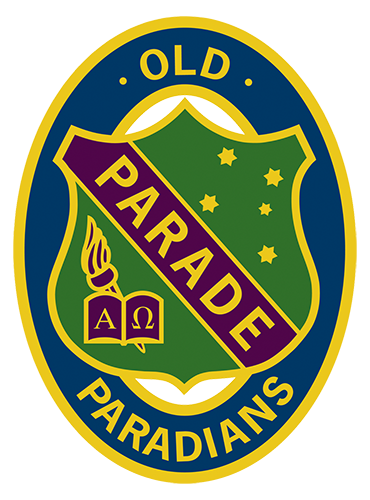

On Sunday, February 27th, 2022 the Myeloma Australia Foundation conducted its first ever national fundraising and awareness walk from various locations around Australia. One of the locations was at Parade College, where 81 participants completed the 1 mile Edmund Rice trail. The walkers commenced from the Garvey Oval carpark and completed the trail twice before finishing the walk back at the Garvey Oval.
The Northern Suburbs (Bundoora) walk was organized by Lauren Jolley. Lauren decided to support the Foundation after her father, Mike Jolley, ex-President of the Old Paradians’ Association Amateur Football Club was diagnosed with Multiple Myeloma in August, 2021.
3.8 with a Mate is Myeloma Australia’s first ever national fundraising and awareness walk. This community event is the Foundation's way of further supporting the 38 mates who are diagnosed with myeloma each week in Australia.
Lewis Derrico, ex-President of the Old Paradians’ Association, who is currently in remission from Multiple Myeloma, was one of the 81 walkers who completed the journey at Parade College. Joining Lewis and Mike on the day, was a local women, who has been in remission for about 2 years, and was keen to meet others going through the same challengers as she is going through.
Myeloma, also known as Multiple Myeloma, is a type of bone marrow cancer arising from plasma cells, which are normally found in the bone marrow. Plasma cells form part of your immune system.
Bone marrow is the ‘spongy’ material found in the centre of larger bones in the body. As well as being home to plasma cells, the bone marrow is the centre of blood cell production (red blood cells, white blood cells and platelets).
Normal plasma cells produce antibodies (also called immunoglobulins) to help fight infection. In myeloma, abnormal plasma cells release only one type of antibody known as paraprotein, which has no useful function. It is often through the measurement of this paraprotein that myeloma is diagnosed and monitored.
Myeloma affects multiple (hence multiple myeloma) places in the body where bone marrow is normally active in adults, i.e. within the bones of the spine, skull, pelvis, the rib cage, and the areas around the shoulders and hips.
Considered a chronic, relapsing and remitting disease, treatment will be recommended during active phases until the disease has stopped progressing (stable) or is no longer detected (complete response). There then may be a period of no treatment with regular monitoring until the myeloma becomes active again. In some cases, ongoing low doses of maintenance treatment will be prescribed.
Currently there is no cure for Myeloma, but with treatment it can be controlled for many years. With the emergence of many new more targeted treatments, survival rates have increased dramatically.
At the completion of the walk, the group headed up to the Waterford Centre, where a sausage sizzle was enjoyed by those who completed the walk.
In organizing the walk and setting up the fundraising page, Lauren set out to raise $500 to support the Foundation, however with the generous support from a number of sponsors and others getting behind the cause as a result of knowing the Jolley family, we have raised $12,582.00 to support the hiring of more nursing staff.
We would like to thank the following sponsors for their support of the walk:
We would also like to thank Parade College for their support in allowing us to use the new Edmund Rice Trail and the Waterford Centre.